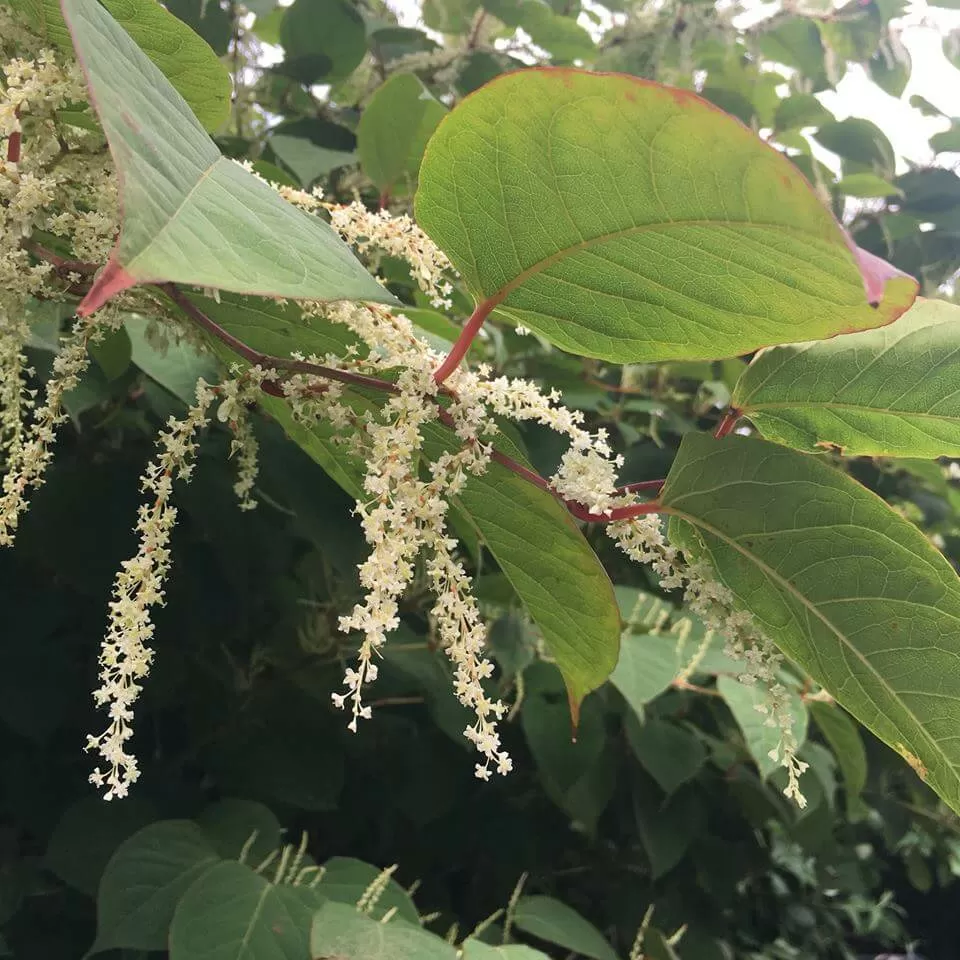Japanese knotweed does not spread via seed as it is often incorrectly conveyed on TikTok!
Although the plants produce seed, the seed is not viable in the UK. This is because all of the Japanese Knotweed plants in the UK are of one sex.
Therefore, Japanese Knotweed spread does not occur via seed.
If Japanese Knotweed doesn’t spread via seed, how does it reproduce? Japanese knotweed can only reproduce through a segment of the rhizome (root) or a section of the stem that has two nodules. The rhizome only needs to be as big as your thumb nail! The stem with two nodule, or growing points can be as small as 5 to 10cm (2 to 4 inches).
So, how is Japanese knotweed spread? There can be a number of factors that can spread it that are both natural and manmade.

1. There are some very unscrupulous individuals that will dig it out and then dump it or fly-tip it. This is why you often see Japanese knotweed growing at the entrance of brown field site or in laybys where it has been thrown out of a van or car.
2. If the ground is rotavated or ploughed up this will dramatically increase the coverage of the Japanese knotweed within that area.
3. Cross-site contamination where Japanese knotweed is accidentally moved from one area to another area, often on the same site. This can be easily achieved when tracked diggers are allowed to move through an area that has Japanese knotweed.
4. Movement of Japanese knotweed on tools, boots and even under mowers are all ways in which Japanese knotweed can be moved from one place to another. We heard about a gardener in the Leicester area that was mowing the Japanese knotweed unknowingly and transferred it to two of his other garden maintenance clients!
5. Strimming Japanese knotweed has the potential to create 1000s of pieces of stems that have two or more nodules that can each become a new plant! Do not strim Japanese knotweed unless you want to have a forest of it!
1. Badgers and Foxes are notorious for moving Japanese knotweed about. They get a small segment of the rhizome stuck in-between their claws and then when they start digging somewhere else that small piece of rhizome is deposited and soon becomes a new plant.
2. Deer and rabbits can also move Japanese knotweed around, but this is less common.
3. When a river breaks its banks and breaks off some rhizome of the Japanese knotweed growing on the embankment this can and is often carried downstream where it is deposited on the embankment and where it will start to grow again. The river Irk in Manchester has extensive Japanese knotweed growing on its banks.
If you find Japanese knotweed spreading on to your land and you don’t know where it has come
from, the first thing to do is to get a professional out to survey it and create a management plan.
This document will provide you with a quote and recommendations on how to deal with this most
pernicious weed. If we can assist you with your Japanese knotweed problem, please contact us by phone or email.


Contact us on 01782 479 444 or complete our online contact form.
We value customer feedback and offer fantastic customer service to all clients. So, to learn more about what our clients think, please view our testimonials page.
